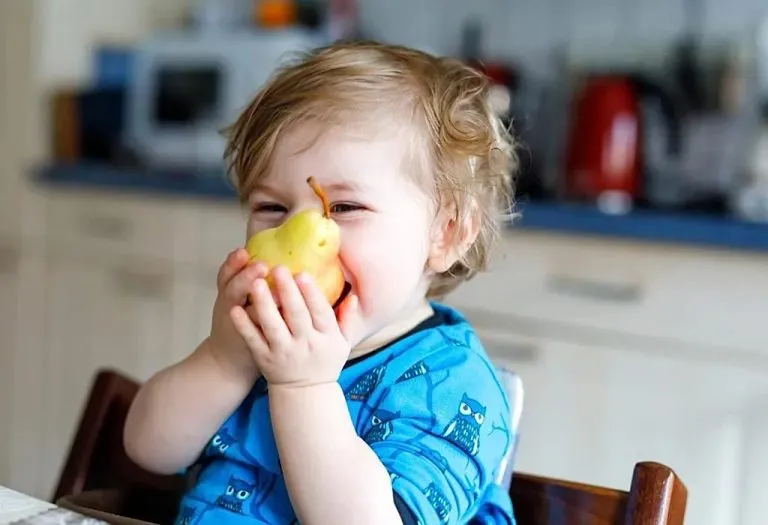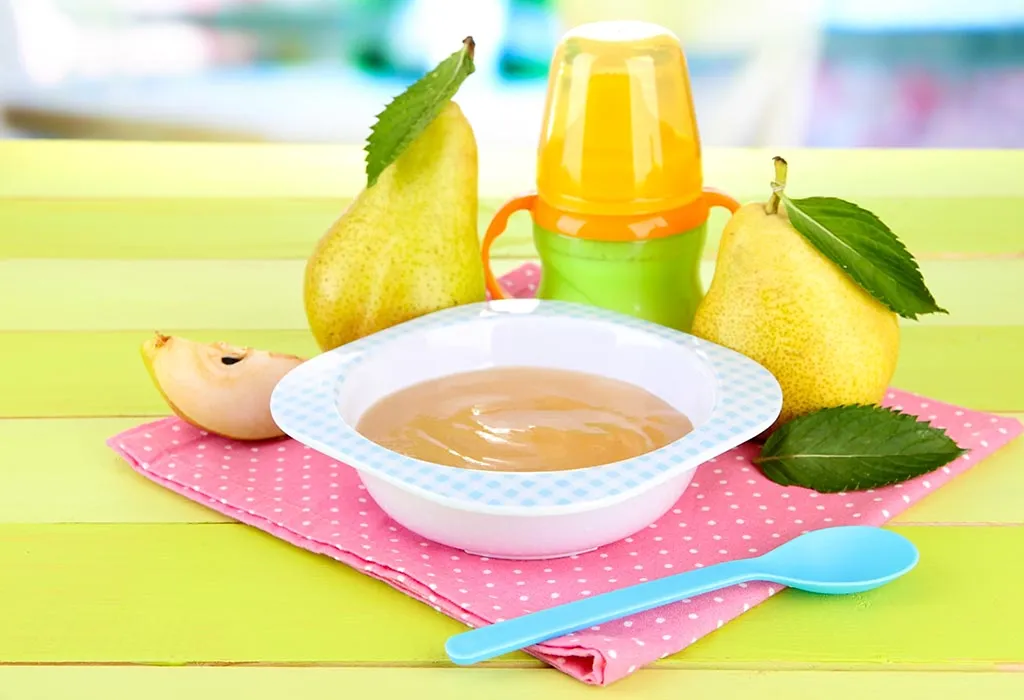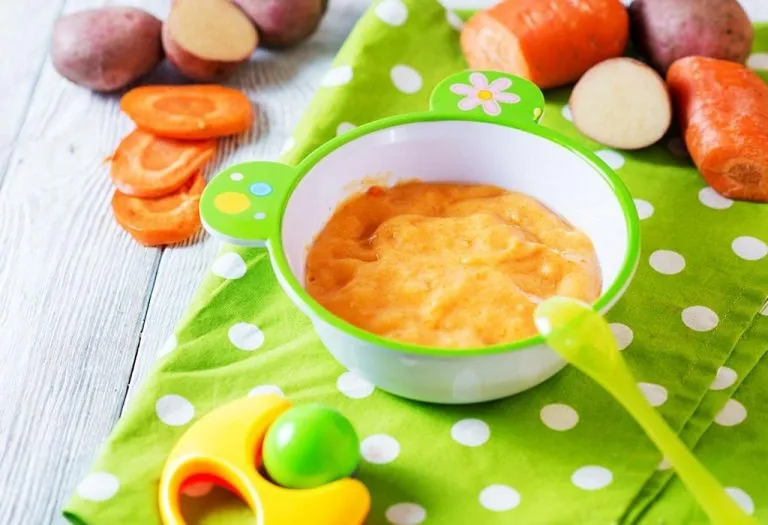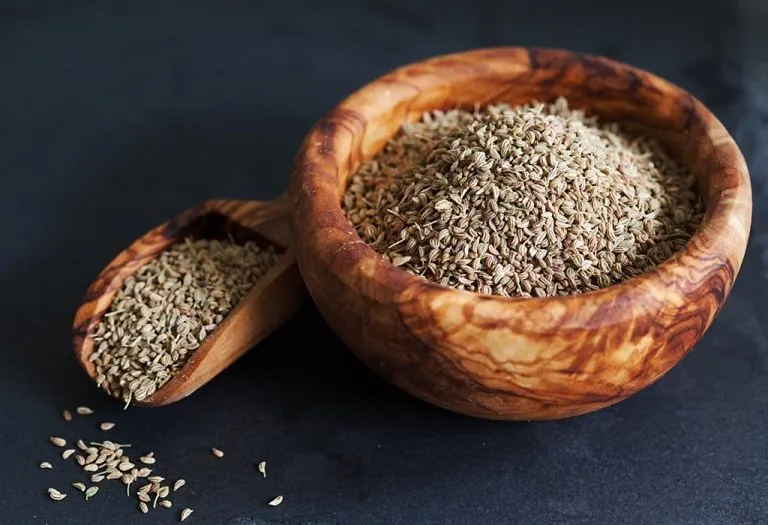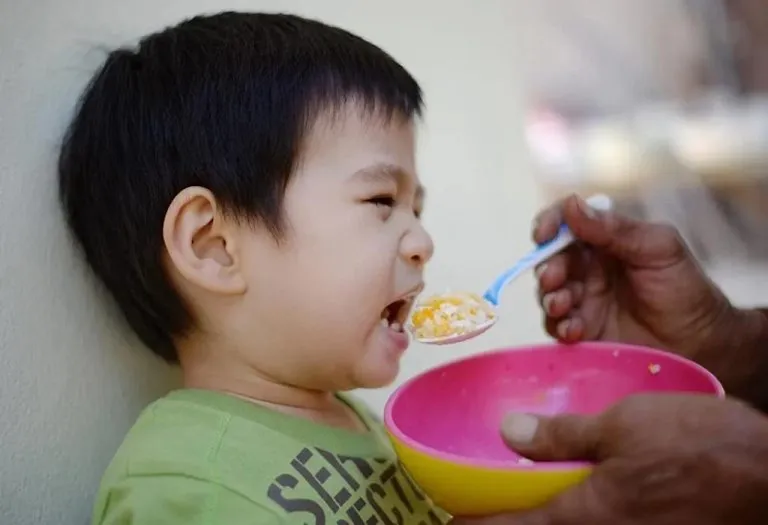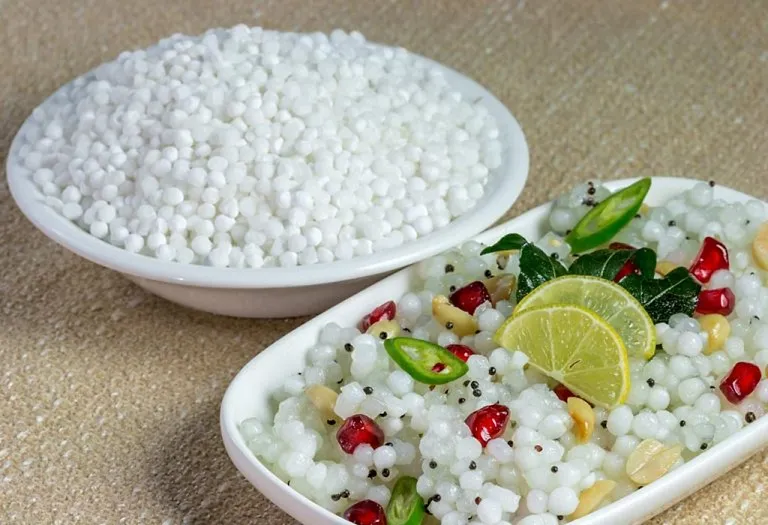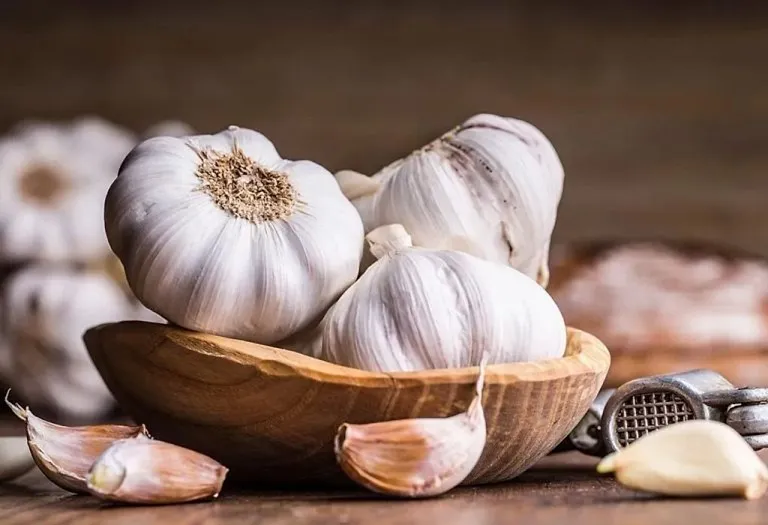Pear for Baby – Health Benefits, Nutritional Value & Recipes

A single pear alone is high in potassium, fibre, vitamin C, folate, and copper. The fruit has no sodium, cholesterol, or saturated fats and is a great addition to your baby’s diet as it is easy on the stomach and has more nutrients per calorie (thus being nutrient-dense). What does a pear offer? Keep reading to find out. When considering pears for infants, it’s important to know how to introduce pear to a baby. Start by offering a small amount of pureed or mashed pear, ensuring it is soft and smooth to avoid any choking hazards. Pears can be a wonderful first fruit for babies due to their gentle nature and high nutritional content.
Is Giving Pear Safe for Infants?
Absolutely! The skin of the pear is easy to digest, and the fruit is a popular natural remedy for constipation in young ones. They lower the risk of cancer and heart attacks and are loaded with vital nutrients and antioxidants your little ones need.
When to Introduce Pear to Babies?
The ideal time to introduce pear to babies is between four to six months of age. If your baby experiences an allergic reaction to the fruit, then you may want to wait till she turns eight months old before letting them continue eating it. Pear puree for baby is an ideal way to introduce it.
Let’s look at the nutrition and the health benefits your child will gain from eating pears.
Nutritional Facts of Pear
Wondering how many calories the humble pear brings? Well, look no further and simply check this table out!
| Nutrient | One Medium Pear |
| Fat | 0 g |
| Calories | 101 |
| Protein | 1 g |
| Vitamin C | 12% of the daily requirement |
| Vitamin K | 10% of the daily requirement |
| Potassium | 6% of the daily requirement |
| Carbohydrates | 27 g |
| Sugar | 17 g |
Source: https://www.medicalnewstoday.com/articles/285430.php
Health Benefits of Pear for Babies
Here are some health benefits of the fruit:
1. Wards off Diseases
The skin of the fruit contains powerful polyphenols, phenolic acids, and flavonoids. Besides containing essential healthy fatty acids, it also provides anti-inflammatory and cancer-protective benefits. According to studies conducted by the National Cancer Institute, a super antioxidant known as ‘Glutathione’ found in the fruit prevents stroke, cancer, and high blood pressure in babies and patients (1).
2. Loaded With Nutrients
The fruit is a good soluble source of fibre. If you’re worried about your baby’s fibre intake, then adding some pears will do the trick (2). Pears are also loaded with pectin, vitamin C, and powerful antioxidants that fight free radical damage and lower oxidative stress, lowering the imbalance of antioxidants and free radicals.
3. Easily Digestible
The skin of the fruit is totally safe and easy to digest. Pears are one of those rare fruits that are not loaded with pesticides and chemicals when being harvested. If your baby suffers from indigestion, diarrhoea, or dysentery, it’s time to add some pears to the diet (3).
4. Heals Wounds Quicker
Studies conducted on pears reveal that they have high healing properties. They help wounds heal faster. If your little one gets hurt when she first begins walking, pears will come to the rescue.
5. Improves Immunity Levels
Pears are known to boost immunity in babies and fight off infections. The biochemicals in pears, such as caffeic acid and chlorogenic acid, are responsible for stimulating the immune system and keeping babies protected.
6. They Are the Least Acidic
Including the fruit in the diet is a gentle way to wean your little one off breastmilk and relieve symptoms of infant reflux and GERD. Pears guard against asthma and have very low acidity profiles compared to some fruits.
Measures to Be Taken When Feeding Pears to Babies
Whether you are adding pears to salads or planning to make some puree, knowing how to prepare them will save your life (and time).
Here’s what you can do:
- Grab a vegetable peeler and work your way from the top to the bottom, peeling vertically.
- Use an apple corer to make a hole right in the middle.
- Make sure to use a knife to cut off any remnant stems at the base and top of the pear.
- Slice the pear into small, manageable pieces to ensure they are easy for your baby to chew and swallow.
- Steam or boil the pear slices until they are soft and tender, making them easier for your baby to digest.
- Always check the temperature of the pear puree or slices before feeding them to your baby to avoid any risk of burns.
How to Choose and Store Pears for Baby Food?
If you’re wondering how to choose and store pears, then tips are sure to help (4):
- Wash the pears well.
- Peel them using a vegetable peeler.
- You could use a device called an apple corer to core them.
- Set them aside and refrigerate for a maximum of 3 days.
- You can also use ziplock bags to keep them fresh.
How to Cook Pears for Infants?
If you’re using pears for baby weaning, here’s how you can cook or incorporate them in recipes:
- Use them in salads with green beans, carrots, and other vegetables.
- Mash them into a puree.
- Make a delicious oatmeal-pear smoothie using a blender.
- Serve diced pears steamed.
- Serve them raw (peeled and deseeded).
- Make mini-pear sandwiches for a quick snack.
Ways to Cut Pears for Baby-Led Weaning
Introducing pears to your baby through baby-led weaning can be a wonderful way to help them explore new textures and flavors. Here’s how you can follow baby-led weaning with pears:
1. Pear Wedges
Cut the pear into large wedges, removing the core and seeds. These wedges are easy for your baby to hold and nibble on, making them perfect for self-feeding.
2. Thin Slices
Slice the pear into thin, soft strips. These slices are great for older babies who have developed better chewing skills and can handle thinner pieces without choking.
3. Matchsticks
Cut the pear into matchstick-sized pieces. These small, manageable pieces are ideal for babies practising their pincer grasp, allowing them to pick up and eat the pear pieces easily.
4. Halves With Skin On
Leave the skin on and cut the pear in half, removing the core. The skin provides extra grip for your baby, making it easier for them to hold the pear and bite into it.
5. Steamed Chunks
Cut the pear into chunks and steam them until they are soft. Steamed chunks are gentle on your baby’s gums and teeth, making them an excellent choice for younger babies.
Delicious Pear Recipes for Your Child
Just steaming or eating pears raw doesn’t cut it. Variety is the essence of a good diet, and here are five pear baby food combinations that will leave your little ones craving for more.
1. Pear Puree
This delicious pear puree will make your baby fall in love with the fruit.
What You Will Need
- Ripe Pears
- Milk
- Water
How to Make
- Use a peeler to remove the skin of the pears and core using an apple corer.
- Divide into quarters and cut the quarters into smaller pieces.
- Add four tablespoons of water on a saucepan and cook gently.
- Make sure to cover for 10 to 12 minutes and keep stirring until soft.
- Let them cool and then blend using a blender. You may add milk for taste or use water for the puree.
- Serve at room temperature.
2. Pear-Oatmeal Smoothie
A delicious smoothie is sometimes what your little one needs. Here’s what you need to make one.
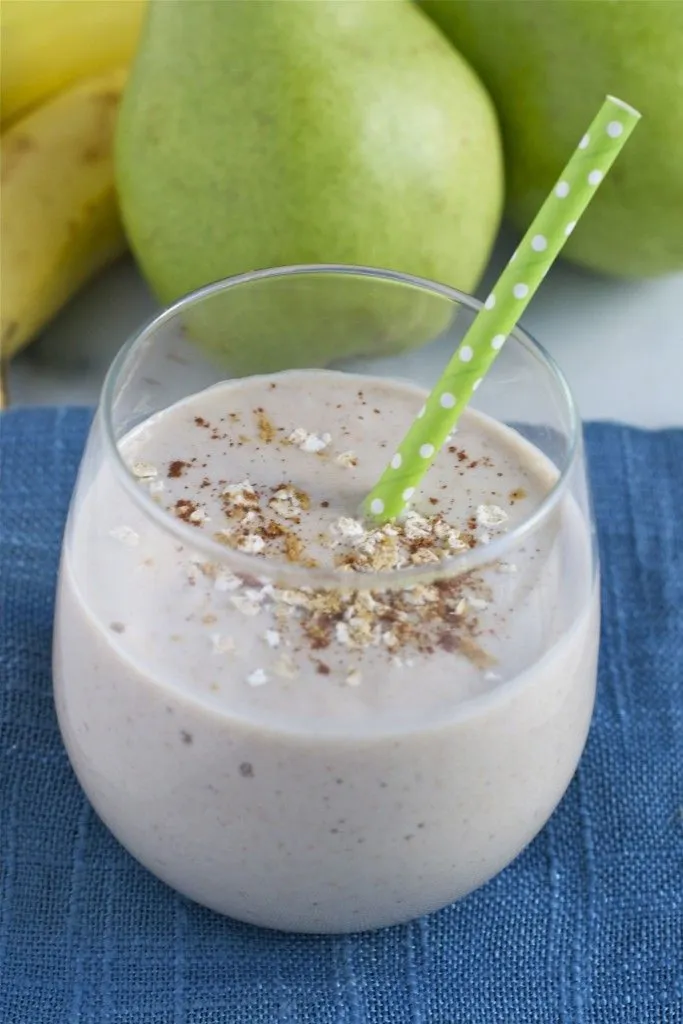
Source: Pinterest
What You Will Need
- Pears
- Milk
- Water
- Oatmeal
How to Make
- Simply heat up oatmeal in some water till it softens.
- Soften the pear, too, and let it cool a bit.
- Once it looks ready, peel and mash the pears and put the oatmeal and the pears in a blender, add some water and milk and blend it till you get your preferred smoothie consistency.
3. Mashed Pears
This one is a simple recipe that doesn’t require a lot of effort. Check it out below.
What You Will Need
- Pureed Pear
- Bananas
- Avocados
How to Make
- You already know how to make pear puree, but now it’s time to take it a step ahead.
- Instead of serving the puree straight away, just get some avocados and sliced bananas.
- Mix the pears, bananas and avocado pieces well and put the mix in a blender.
- Blend till smooth and serve fresh.
- Alternatively, fresh homemade pear juice for babies and mixed juices, including diced pears work just as well.
4. Pear and Carrot Puree
A wholesome puree that’s rich in vitamins and easy on your baby’s tummy.
What You Will Need
- Pear
- Carrot
How to Make
- Peel and chop the pear and carrot into small pieces.
- Steam the pear and carrot until both are tender.
- Allow the fruits to cool slightly, then blend them together until smooth.
- Add a little water if necessary to achieve the desired consistency.
5. Pear and Sweet Potato Mash
This combination offers a sweet and savory taste that’s both nutritious and delightful.
What You Will Need
- Pear
- Sweet Potato
How to Make
- Peel and dice the pear and sweet potato.
- Boil or steam the sweet potato until tender, then add the pear pieces and continue cooking until soft.
- Mash the pear and sweet potato together until smooth.
- Let it cool before serving to your baby.
Note: First, introduce the fruits individually to the baby in order to check for any allergies.
FAQs
Now that you’re well-acquainted with pears, a couple of questions may have instantaneously popped into your head. Are there allergies? Is the skin good for my baby? Well, we’ve got you covered.
1. Can babies be allergic to pears?
Yes. Pear allergy in babies under six months old is possible, although the chances of that are very rare.
2. Should I peel pears for my baby?
You don’t necessarily need to. The pear skins are good for your little one and come packed with a healthy dose of fibre and beneficial nutrients. You can use pear puree for baby constipation, although it varies with the variety of pear and the age of the baby.
3. Can we freeze pear baby food?
Yes! The best way to go about this is to cut the pear into little pieces without the stem and the seeds. Once this is done, put them in the freezer in a tray for about 4 hours until its frozen stiff. After this, put them in an air-tight container and continue to refrigerate. Please avoid using sugar as it can lead to early dental issues for the baby.
4. Can I give my baby pears if they have a sensitive stomach?
Yes, pears are gentle on the stomach and can be a good choice for babies with sensitive digestive systems. However, it’s always best to start with a small amount and monitor your baby’s reaction. Pear juice for infants is a good and safe option.
Pears are an awesome way to make sure your little one gets his daily dose of nutrition and a quick fix for acid reflux symptoms. If your baby feels constipated or has trouble being weaned off, you can incorporate pears into their diet to make the transition gradual and hassle-free. Consult a doctor or paediatrician in case you find your little one being fussy during mealtimes or is allergic to pears.
References/Resources:
1. Jones. D, Coates. R, Flagg. E, Eley. W, et. al.; Glutathione in foods listed in the National Cancer Institute’s Health Habits and History Food Frequency Questionnaire (Nutrition and Cancer); National Library of Medicine; https://pubmed.ncbi.nlm.nih.gov/1574445/
2. How Can I Tell If My Baby is Constipated?; American Academy of Pediatrics; https://www.healthychildren.org/English/ages-stages/baby/diapers-clothing/Pages/Infant-Constipation.aspx
3. Parle. M; Why is pear so dear? ResearchGate; https://www.researchgate.net/publication/304538992_Why_is_pear_is_so_dear; December 2015
4. Safe Food for Babies and Children: Making Homemade Baby Food for Babies 6 Months and Older; North Dakota State University; https://www.ndsu.edu/agriculture/extension/publications/safe-food-babies-and-children-making-homemade-baby-food-babies-6-months-and
5. Pear; Solid Starts; https://solidstarts.com/foods/pear/
6. Allergy information for: Pear (Pyrus communis ); Manchester 1824: The University of Manchester; http://research.bmh.manchester.ac.uk/informall/allergenic-food/index.aspx?FoodId=39
7. Pears, raw; Food Data Central; U.S. Department of Agriculture; https://fdc.nal.usda.gov/fdc-app.html#/food-details/169118/nutrients
Oranges for Babies
Banana for Babies
Watermelon for Infant
Introducing Avocado to Babies
Was This Article Helpful?
Parenting is a huge responsibility, for you as a caregiver, but also for us as a parenting content platform. We understand that and take our responsibility of creating credible content seriously. FirstCry Parenting articles are written and published only after extensive research using factually sound references to deliver quality content that is accurate, validated by experts, and completely reliable. To understand how we go about creating content that is credible, read our editorial policy here.






